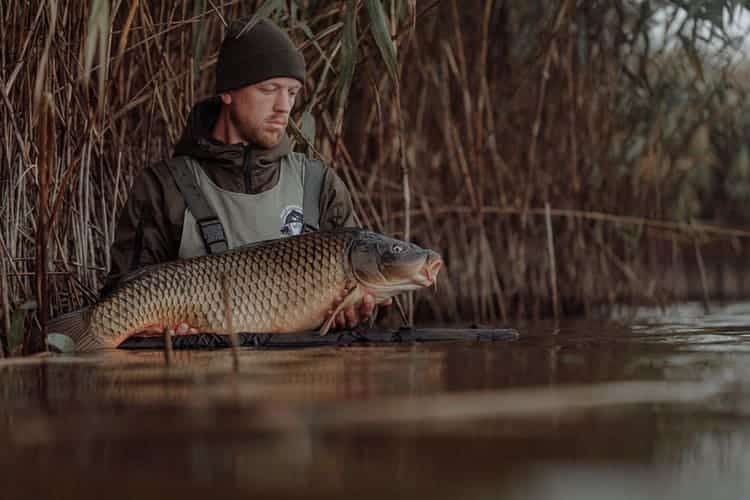Fishing is a lovely pastime, but it can be quite frustrating for you if every time you go fishing, you come back home with nothing. Many factors affect your fishing experiences, such as type fishing rod, line, hooks, sinkers, bobbers, and bait. Of these factors, the fish bait is the most important item.
Regardless of how sophisticated your fishing equipment is, you can’t fish successfully without the right bait. It can be overwhelming when trying to choose the best bait for your needs, so in this post, you will learn everything you need to know about fish bait, and with this knowledge, you will have more successful fishing trips.
Fishbait can either be live or artificial. Artificial baits, also called Lures, are more expensive but can be easily reused and are cleaner. On the other hand, live baits are messier, have a strong smell, and have to be kept alive to be used. Certain food items like sweet corn and pieces of hotdogs can also be used as bait.
1. Live Bait
Live baits have been in use for centuries and are very popular among anglers. The most common live bait is Worms because most fishes are readily accessible and eaten, therefore a universal bait. Other live baits that can be used, according to a useful guide at https://fishmasters.com, are crickets, leeches, minnows, and maggots. Some live baits work best for a certain type of fishes. For example, panfish are best caught by using earthworms. Below is a table showing the different kinds of live baits that can be used for different fishes.
| Fish | Bait |
| Trout | Earthworms, minnows, crayfish, halved nightcrawlers, leeches, grubs, crickets. |
| Bass | Nightcrawlers, hellgrammites, fathead, minnows, and shad |
| Pain fish | Earthworms, grubs, mealworms, and crickets |
| Carp | Sweet corn, boilies, bread, dough balls |
| Catfish | Cut bait, right nightcrawlers, chad, small herring, hot dog, chicken liver, and Crayfish |
| Gar | Cut bait, grub, and minnows |
| Walleye | Leeches, Minnows, and Nightcrawlers |
| Salmon | Cured fish roe, cut herring, and chad |
| Whitefish | Insects, Minnows, and bread |
2. Artificial bait (Lures)
If you don’t like the smell and how messy live baits are, then artificial bait is a great option for you. Lures are better for catching larger fishes than live baits. They are made to either look and act like small fishes, insects, and larvae that fishes like to eat OR attract fish with their colors, reflections, and movement.
Lures are made specifically for a particular type of fish or a group of similar fishes, so choose based on your choice of fish. Other factors to look out for are:
- Weight: Use heavier lures for stronger currents and windy days
- Color: Always use bright colored lure in a muddy lake, not in a crystal clear water
Types of Lures
Certain types of lures work faster on specific kinds of fish. For example, some lures can work better for bass fishing, while others are more effective for trout fishing. Nevertheless, it’s important to know all the types of lures while fishing.
- Soft lure: This is made of a soft, rubbery material that looks like bait. So it comes in shapes such as worms, nightcrawlers, grubs, frogs, hellgrammites, and leeches. It is durable and can easily be used. All you do is set in on a hook like you would do with live bait.
- Spinnerbait: This bait imitates a swimming fish and therefore attracts a hungry predator such as bass. It has oval-shaped spinner blades that spin hence the swimming effect. They move horizontally and have many shapes and colors.
- Crankbait: It comes in different sizes and color and is very good to catch a bass
- Spoons: This is one of the oldest types of bait. It is a concave and curved metal that wobbles in water. It reflects light and resembles a baitfish that is injured, and it attracts another fish.
- Jigs: This lure has a weighted head attached to one side and a hook attached to the other side. They help catch fish below the surface level.
- Flies: This bait is very useful in fly fishing. They float on the water surface and look like flies.
- Plugs: Plugs are shaped to look like baitfish or frogs. They float, sink, dive or hover depending on the design you purchase

Ensure you learn the best bait that works for the type of fish you want to catch. Using the right bait would help significantly improve your fishing experience. However, fishing with lures and baits, especially when you’re a beginner, is a trial and error at first. Don’t get discouraged. By constantly practicing and understanding the type of fish you have in your environment and choosing the appropriate bait, you would make significant progress.

